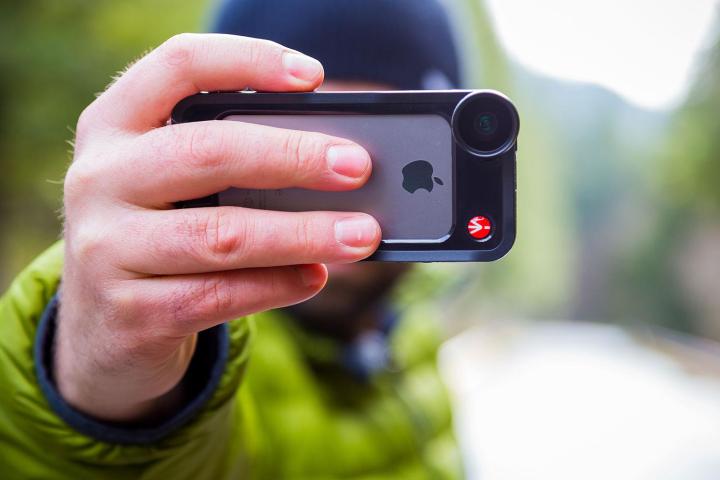
On the surface, it would appear as though there’s little need for consumers to purchase yet another camera when most phones are capable of capturing photos and videos with similar specs. But it doesn’t take much digging to realize the benefits that come with having a separate, dedicated camera designed to get down and dirty.

Generally speaking, smartphones are made with a jack-of-all-trades mentality. That is, they’re capable of doing a lot of things, and doing each of them adequately. But this approach often prevents a product from excelling in any specific functionality; for the sake of this article, that’s taking photos and videos. Action cams, on the other hand, are a specialized device designed to do one thing and do it well — capture high quality photos and videos in a small, rugged form factor.
Let’s face it, no matter how water-resistant or ruggedized the latest smartphones are, they don’t stand a chance.
In truth, there is not much difference in image quality between smartphones and action cams. In fact, many sensors and image processors found inside action cams are the exact same pairings found tucked inside the latest and greatest smartphones. What differentiates the two more than anything else are their respective form factors, optics, affordability, and the overall niche they fulfill In the market.
Let’s face it, no matter how water-resistant or ruggedized the latest smartphones are, they don’t stand a chance against the elements and terrain action cams are designed to endure. Sure, you could pick up a rugged case for your smartphone to protect it. But they don’t come cheap and they still don’t solve all of the shortcomings of using a smartphone. Action cams are designed to be small, inconspicuous devices capable of being mounted almost anywhere you can imagine. No matter how well protected your

It might seem like a small detail in the full realm of things, but another limiting factor in smartphones taking over the market is the optical design of the camera units. Whereas smartphone cameras are made to replicate a field of view similar to that of the human eye, action cams are made to capture much more of the scene and give a surreal point of view. In terms of numbers, the diagonal field of view of an iPhone 7 is 75 degrees; GoPro’s Hero 5 Black doubles that to 150 degrees.
It’s this dramatic super-wide-angle perspective that gives action cams their signature look and it’s something smartphones won’t be replicating anytime soon. “But what about third party lens attachments,” you ask? Go ahead and grab a wide-angle lens adapter, but good luck finding one that works with your ruggedized case. And if you are lucky enough to find the perfect combination, don’t forget to take into account the cost. By the time you have a rugged case and a new set of wide-angle optics for your smartphone, you’ll probably be halfway to the cost of a new action cam.
Good luck mounting an iPhone 8 or Pixel XL on top of an eagle.
Speaking of cost, let’s look at the affordability. Let’s say your smartphone costs $800 — a decent average for most flagship devices. For that price, you could pick up, at the very least, two action cams with equivalent image quality. Now, sure, most people are going to buy the
Many action cameras also feature replaceable batteries, so you can carry a handful of spares and swap them in to keep shooting all day. Recharging a smartphone, or keeping it connected to a USB battery brick, is much more cumbersome by comparison.
Wrapping up, the differences between your phone and an action camera should be easy to see. The technology inside the devices might be all but identical, but it ultimately boils down to functionality on a practical level. Smartphones are made to do many things, and they are even perfectly fine cameras for a variety of casual uses. But action cams focus on a single task, and they handle that task better than any other device.
Editors' Recommendations
- GoPro unveils its latest action camera, the Hero 12 Black
- GoPro Hero 10 Black vs DJI Action 2 vs. Insta360 One RS: Clash of the action cameras
- These are the features making me love the iPhone 13 Pro’s camera
- It turns out the iPhone 12 Pro is the iPhone 13 Pro’s toughest camera rival
- Google Pixel 6 pricing looks set to match Apple’s iPhone 13




